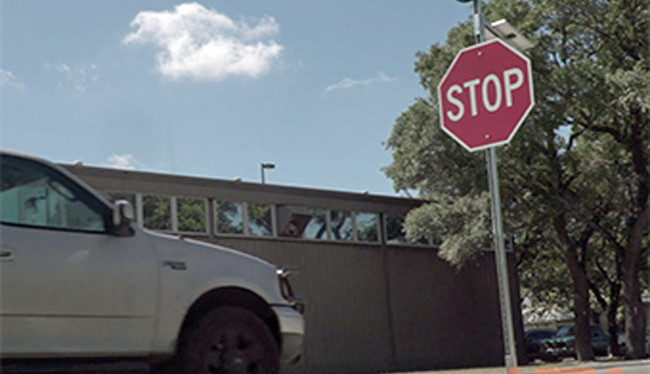Low-cost road sign will improve visibility
March 19, 2019
on
on

Researchers at the University of Texas at San Antonio have developed an automated low-cost illumination system for highway stop signs. Motorists approaching a road intersection with a stop sign will be alerted by a flashing road sign warning that they need to stop.
Driving on unfamiliar roads, especially in poor weather conditions with reduced visibility can lead a driver to miss an important road sign. Stop signs can also be often ‘overlooked’ or ignored by drivers on rural roads. Highways or motorways are the safest path from A to B in the USA and also in the UK where rural roads have the worst safety record. The most recent statistics record that more than twice as many fatalities occurred on rural roads compared to urban roads in recent years.
Video: utsa.edu
Solar operation
The intelligent stop sign uses a large multi-pixel passive infrared (PIR) sensor to detect the approach of vehicles and activate the sign’s illumination system. The system is powered via solar cells and a backup battery, making it simple to install at almost any road junction. Signals from the sensor can determine if a vehicle is approaching or receding and will activate the lighting accordingly. This automated lighting effect improves the sign’s visibility, making it more likely the driver will obey the signal stop safely.Driving on unfamiliar roads, especially in poor weather conditions with reduced visibility can lead a driver to miss an important road sign. Stop signs can also be often ‘overlooked’ or ignored by drivers on rural roads. Highways or motorways are the safest path from A to B in the USA and also in the UK where rural roads have the worst safety record. The most recent statistics record that more than twice as many fatalities occurred on rural roads compared to urban roads in recent years.
Low cost
Road signs lit by continuously flashing lights are not so noticeable and consume more energy, requiring a continuous external power supply. Existing systems based on road-surface induction loops, radar sensors or cameras are much more expensive to install and maintain. A single installation can cost around $5000 whereas the solution developed at UTSA, should be less than $100.Read full article
Hide full article


Discussion (1 comment)